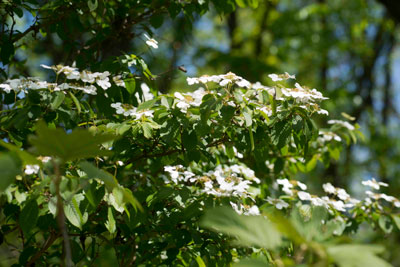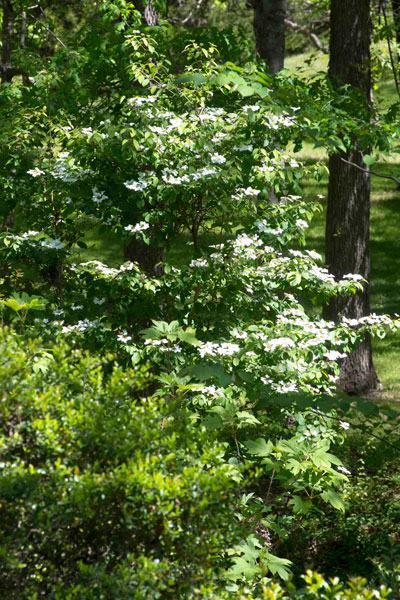Plant of the Week – April 30, 2020: Doublefile Viburnum
I grew up in Texas – College Station, to be exact. I transferred from A&M to Ohio State as a junior, and for some reason, OSU gave me credit for my plant materials courses. That let me graduate a year earlier, but it also meant that I was dumb as a buckeye stump when it came to Midwest woody plants.
However, I learned as many as I could as quickly as I could, and one of the groups that stood out most in my mind were the lovely viburnums.
We moved to Texas (where I thought I knew everything) so I could work for the Extension Service, and I started importing Ohio woody plants to try in our landscape.

Enter doublefile viburnum…
I bought this plant out on East Main or East Broad one summer while we were back in Columbus, Ohio. We brought it and several other species back to North Texas and I set them out. Most have done pretty well, but this one has excelled.
My plant is 25 years old now, growing in alkaline black clay gumbo soils. I told someone the other day that it reminds me of a poor man’s dogwood for surviving those adverse conditions.

Here are the pertinent particulars…
• Viburnum plicatum (see note at bottom about confusion between two forms)
• Native to Japan and China
• Shade or early morning sun
• Rich, moist soil is preferred
• Hardy to Zones 5-8, but probably best suited to eastern third of Texas
• Upright habit, grows to 8 to 15 ft. tall and 6 to 10 ft. wide
• Deciduous
• Blooms early April in Southeast and East Texas, mid-April in Northeast Texas, but was a little later this year at our house
• No pests that I have seen reported nor that I have experienced on my plant
The plant taxonomists are trying to confuse us…
Every plant carries a scientific name, and there are reasons why words are assigned in those names.
There are two well-known forms (forma, abbreviated “f.”) of this species. The highly respected Missouri Botanical Gardens explains how those two forms achieved their names:
“The sterile snowball form (f. plicatum) is known from cultivation only (first observed as a garden plant in Japan). It was discovered prior in time to the discovery of the wild fertile doublefile form (f. tomentosum) from which it was actually developed. As a result of this inverted schedule of discovery, the sterile form was mistakenly given a species name (Viburnum plicatum) and the subsequently discovered fertile form (f. tomentosum) was named as if it were a variety of the species. The wild form (f. tomentosum) is native to forests and thickets in China and Japan.”
Got it? Good! I’ll let you take it from there. All I know is that I love this little tree or large shrub that just finished blooming at our place a couple of days ago.
